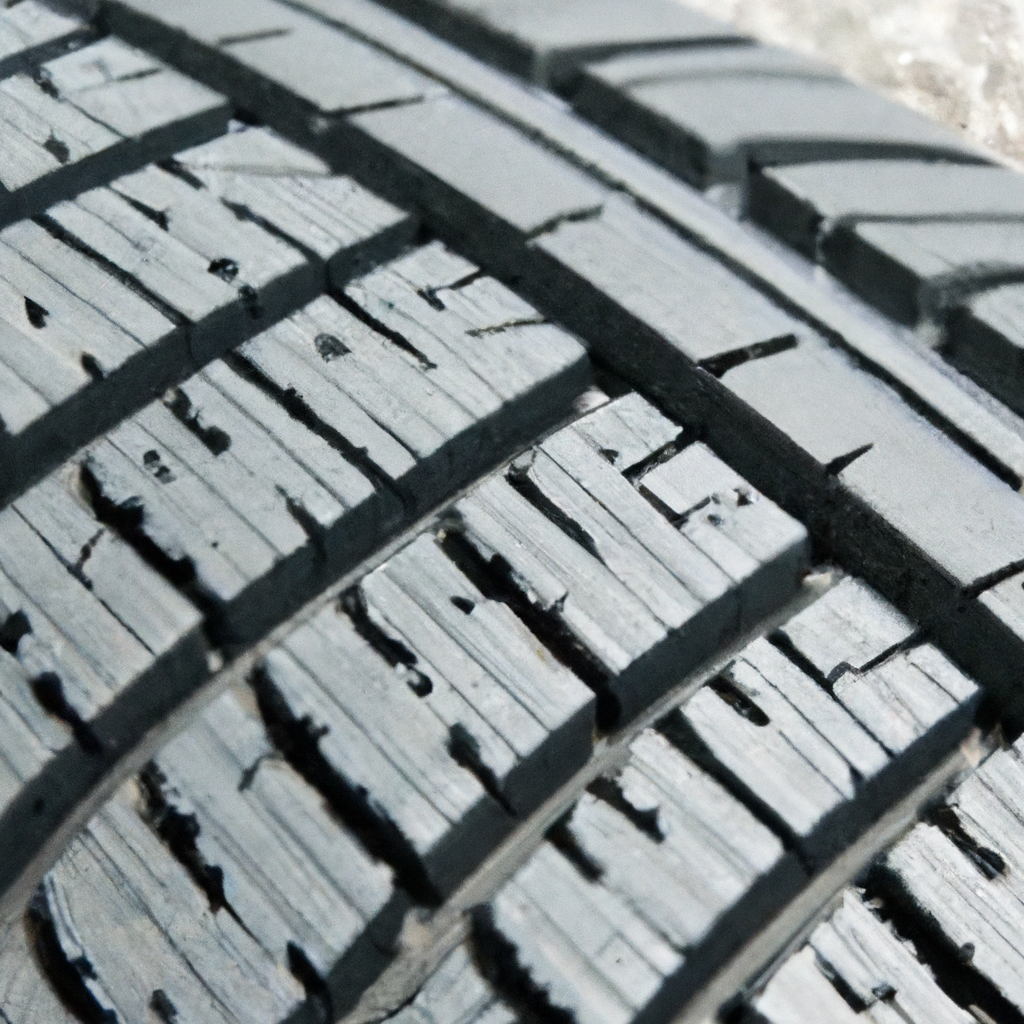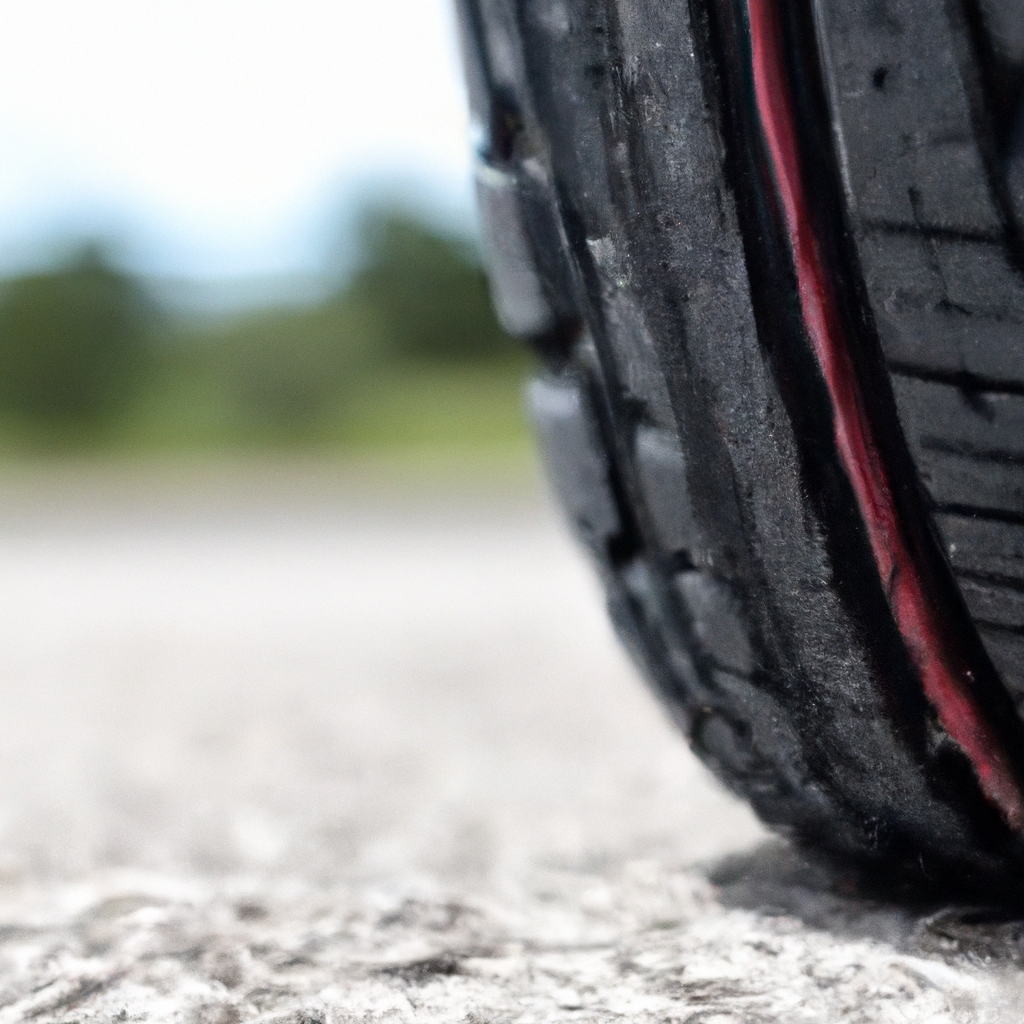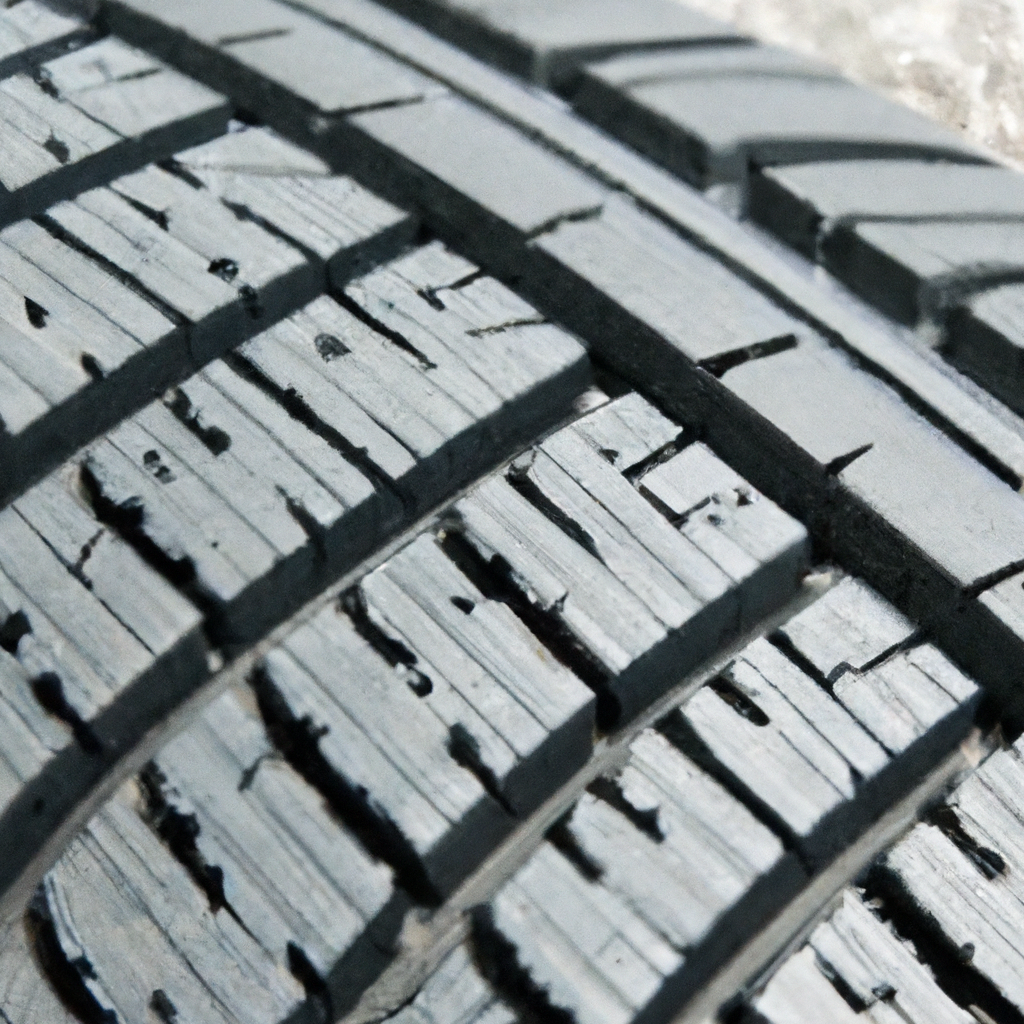Have you ever wondered how tire tread wear indicators work? Well, let’s take a moment to unravel the mystery! Tire tread wear indicators are those tiny raised bars located in the grooves of your tires. These indicators serve as an essential safety feature, signaling the need for a tire replacement when they become visible. By understanding how these little bars work, you can ensure the continued performance and safety of your vehicle. So, let’s dive in and discover the fascinating world of tire tread wear indicators!
What are tire tread wear indicators?
Tire tread wear indicators, also known as wear bars or wear indicators, are small rubber bars located in the grooves of your tires. These indicators are strategically placed to help you determine when your tires are worn and need to be replaced. By visually inspecting the indicators, you can assess the condition of your tires and ensure your safety on the road.
Definition
Tire tread wear indicators are raised rubber bars that become visible as the tire tread wears down. They are designed to show a precise point at which the tread depth is no longer sufficient for safe driving.
Purpose
The primary purpose of tire tread wear indicators is to provide a simple and effective way for drivers to check the wear of their tires. As the tires roll, the tread gradually wears away. The wear bars are positioned within the grooves of the tire tread to indicate when the tire’s tread is nearing the legal limit or has become unsafe. This helps drivers know when it is time to replace their tires.
Types of tire tread wear indicators
There are different types of tire tread wear indicators available, each serving the same purpose of indicating tire wear but with slight variations in design.
Visual indicators
Visual indicators are the most common type of wear indicators found on regular tires. They are small depressions molded into the tire grooves, making them easily visible when the tire is new. As the tread wears down, these depressions become less visible, indicating that the tire may need to be replaced.
Tread wear bars
Tread wear bars are another type of wear indicators commonly seen on tires. Instead of small depressions, they are raised rubber bars that span across the width of the tire tread. As the tread wears down, these bars become more exposed, serving as a clear visual indication that the tire has reached its wear limit.
Tread wear indicators in snow tires
Snow tires often have unique tread wear indicators specifically designed to provide information about their suitability for winter driving conditions. These indicators are typically in the form of embedded snowflakes or additional grooves, which provide better traction on snow and icy surfaces. When these indicators are no longer visible or the additional grooves are worn, it is a sign that the tire may no longer provide optimum performance in winter conditions.

Understanding tire tread depth
Tire tread depth refers to the measurement of the vertical distance between the top of the tread and the deepest part of the tire groove. It plays a crucial role in the overall performance and safety of your tires.
Importance of proper tread depth
Proper tread depth is vital for optimal traction, especially in wet or slippery conditions. The tread’s pattern and depth help channel water away from the tire’s contact patch, preventing hydroplaning and improving grip. It also enhances handling, maintains stability, and reduces the risk of skidding or sliding while driving.
Measuring tire tread depth
To measure tire tread depth accurately, you can use various tools such as a tread depth gauge. This tool measures the distance between the base of the tread groove and the top of the tire tread, providing an accurate reading of the remaining tread depth. It is essential to measure tread depth regularly to ensure your tires are within the safe range.
Legal tread depth limits
Different countries and regions have specific laws regarding the minimum legal tread depth. In most places, the minimum tread depth requirement for regular tires is around 2/32 of an inch or approximately 1.6 millimeters. However, it is always recommended to replace your tires before they reach the legal limit to ensure optimal safety and performance.
How do visual indicators work?
Visual indicators are an easy and convenient way to identify how much tread is left on your tires and determine when it is time for a replacement.
Identifying tread wear visually
When the tires are new, the tread wear indicators are typically deeper and less visible. As the tire’s tread starts to wear down, the indicators become shallower and closer to the surface of the tire. By visually inspecting the tire grooves, you can easily identify the presence and depth of the wear indicators. Once these indicators are flush with the tire surface, it is a clear indication that the tire’s tread has reached its limit, and replacement is necessary.
Recommended depth for tire replacement
While the legal tread depth limit is generally around 2/32 of an inch, it is recommended to replace your tires before they reach this point. Many experts suggest replacing tires when the tread depth reaches 4/32 of an inch or 3.2 millimeters. This provides a comfortable safety margin and allows for improved traction and handling in challenging driving conditions.

The function of tread wear bars
Tread wear bars are another effective method to determine the remaining tread depth on your tires and assess when they should be replaced.
Construction and design of tread wear bars
Tread wear bars are built into the tire’s tread design during manufacturing. They are raised rubber bars that are positioned at various intervals across the width of the tire tread. These bars are specifically designed to be spaced apart equally and to be the same height as the tire’s minimum tread depth requirement.
Visibility and purpose of tread wear bars
As the tire’s tread wears down, the tread wear bars become more exposed and get closer to the surface. When the bars become flush or level with the surrounding tread, it signifies that the remaining tread depth has reached the minimum safe limit. At this point, it is crucial to replace the tire to ensure optimal safety and performance on the road.
Tread wear indicators in snow tires
Snow tires are designed to provide enhanced traction and stability on snowy or icy surfaces. They often come with specialized tread wear indicators that are tailored to their unique features and functionality.
Different types of snow tire tread wear indicators
Snow tires may have additional visual indicators, such as embedded snowflakes or wear bars, to help monitor the condition of the tire. These indicators differ from regular tire wear indicators and are specifically designed to provide better performance in winter conditions. When these indicators are no longer visible or the additional grooves have worn down, it is an indication that the winter tire may need to be replaced.
Enhanced traction and safety features
Snow tires with specific tread wear indicators offer superior traction and grip on snowy or icy roads. The additional grooves and specialized design patterns help maintain stability, prevent slippage, and provide better control. By regularly inspecting these indicators, you can ensure that your snow tires are still in optimal condition and will perform at their best during winter driving.

Factors affecting tread wear
Several factors influence the rate of tread wear on your tires. Being aware of these factors can help you take preventative measures and extend the lifespan of your tires.
Driving habits and conditions
Your driving habits play a significant role in how quickly your tires wear down. Aggressive driving, excessive braking, and accelerating sharply can lead to accelerated wear. Additionally, driving on rough or poorly maintained roads, encountering sharp objects or debris, and driving in extreme temperatures can also contribute to faster tread wear.
Tire maintenance
Proper tire maintenance is crucial in preserving tread life. Regularly checking tire pressure, rotating tires, and ensuring proper wheel alignment and balancing can help distribute the load and wear evenly across the tire surface. Maintaining the correct tire pressure also optimizes fuel efficiency and traction.
Alignment, balance, and rotation
Improper wheel alignment, unbalanced tires, and irregular rotation can cause uneven wear on your tires. When your wheels are not aligned correctly, the tires may wear unevenly on the inside or outside edges. Balancing your tires ensures that weight is distributed evenly, preventing excessive wear on specific areas. Regular tire rotation helps promote uniform tread wear and extends the life of your tires.
How to check your tire tread wear
Regularly monitoring tire tread wear is essential for maintaining optimum safety on the road. There are several methods you can use to check the condition of your tires.
Using a tread depth gauge
A tread depth gauge is a simple tool that accurately measures the tread depth. Place the gauge into the tread groove and push it down until the base rests on the tire surface. Note the measurement displayed on the gauge. Repeat this process in multiple locations across the tire to ensure an accurate assessment of the overall tread depth.
Penny test
The penny test is a quick and easy way to check tire tread depth using a penny. Take a penny and place it upside down into the tread groove. If you can see the top of Lincoln’s head, it means the tread depth is too shallow, and your tires may be unsafe. If Lincoln’s head is mostly covered by the tread, it indicates sufficient tread depth.
The wear bar method
Inspecting the wear bars on your tires is another effective way to check their tread wear. Look for the tread wear bars positioned across the width of the tire. If these bars are level with the adjacent tread, it signals that the tire’s tread has worn down significantly, and replacement is necessary.

Importance of regular tire inspections
Regular tire inspections are vital for maintaining tire health and ensuring your safety on the road. Neglecting tire maintenance and failing to identify potential issues can lead to premature tire failure and hazardous driving conditions.
Safety implications
Tires with insufficient tread depth or uneven wear patterns can compromise your vehicle’s handling, braking, and overall stability. This can increase the risk of accidents, especially in wet or slippery conditions. Regular inspections help identify and address potential tire issues before they become a safety hazard.
Preventing premature tire failure
Regularly checking the condition of your tires allows you to detect early signs of damage or wear. By identifying issues such as cuts, bulges, sidewall damage, or nails embedded in the tread, you can take prompt action to prevent tire failure or blowouts. Additionally, addressing any imbalances, misalignments, or abnormal wear patterns early on can help extend the lifespan of your tires.
Replacing worn-out tires
Knowing when to replace your tires is crucial for your safety and the performance of your vehicle. Understanding the signs of worn-out tires and choosing the right replacements are essential steps in maintaining optimal driving conditions.
Knowing when to replace tires
There are several indicators that your tires may need to be replaced. These include reaching the legal minimum tread depth, noticing significant signs of wear on the tire surface, or encountering tire-related issues such as constant flats or alignment problems. Regular inspections and monitoring the condition of your tires will help you determine when it is time for a replacement.
Choosing the right tires
When replacing your tires, it is essential to select the appropriate tires for your specific driving needs and vehicle requirements. Consider factors such as tread pattern, durability, performance characteristics, and climate conditions. Consulting with a tire professional can provide valuable guidance in choosing the right tires that match your driving style and ensure maximum safety.
Proper tire installation
Correct tire installation is crucial to ensure optimal performance and safety. Always have your new tires installed by a professional technician who has the knowledge and experience to mount and balance the tires correctly. Improper installation can lead to issues such as uneven wear, poor handling, or even tire failure, compromising your safety on the road.
By understanding tire tread wear indicators, measuring tread depth, monitoring tire wear, and taking appropriate action, you can ensure the longevity and safety of your tires. Regular inspections, proper maintenance, and prompt replacement when necessary will keep your vehicle equipped with reliable tires and provide peace of mind on every journey. Remember, maintaining your tires is not just about convenience; it is a crucial aspect of road safety.


